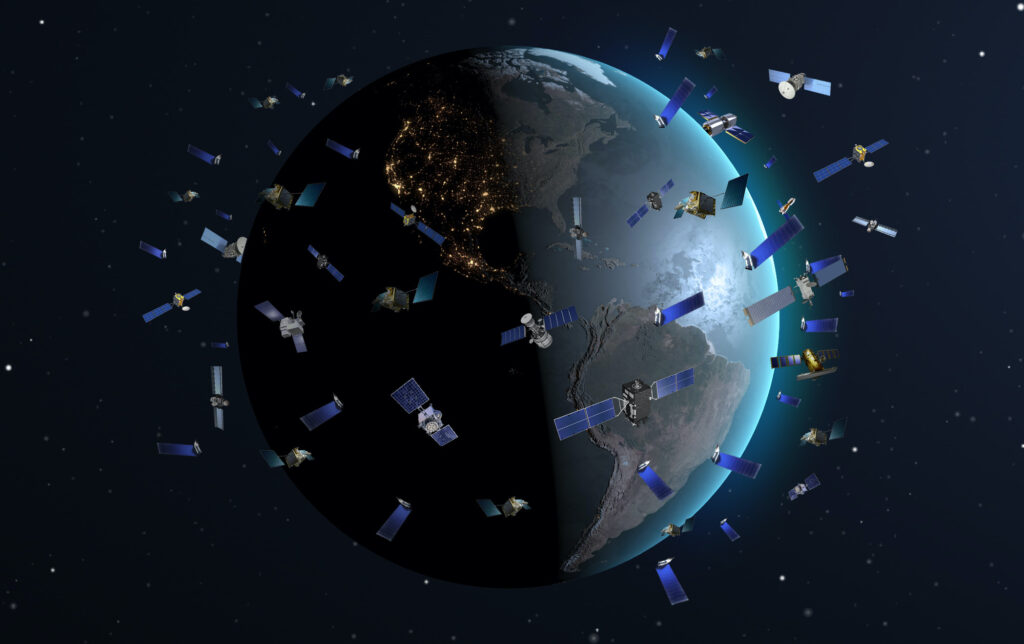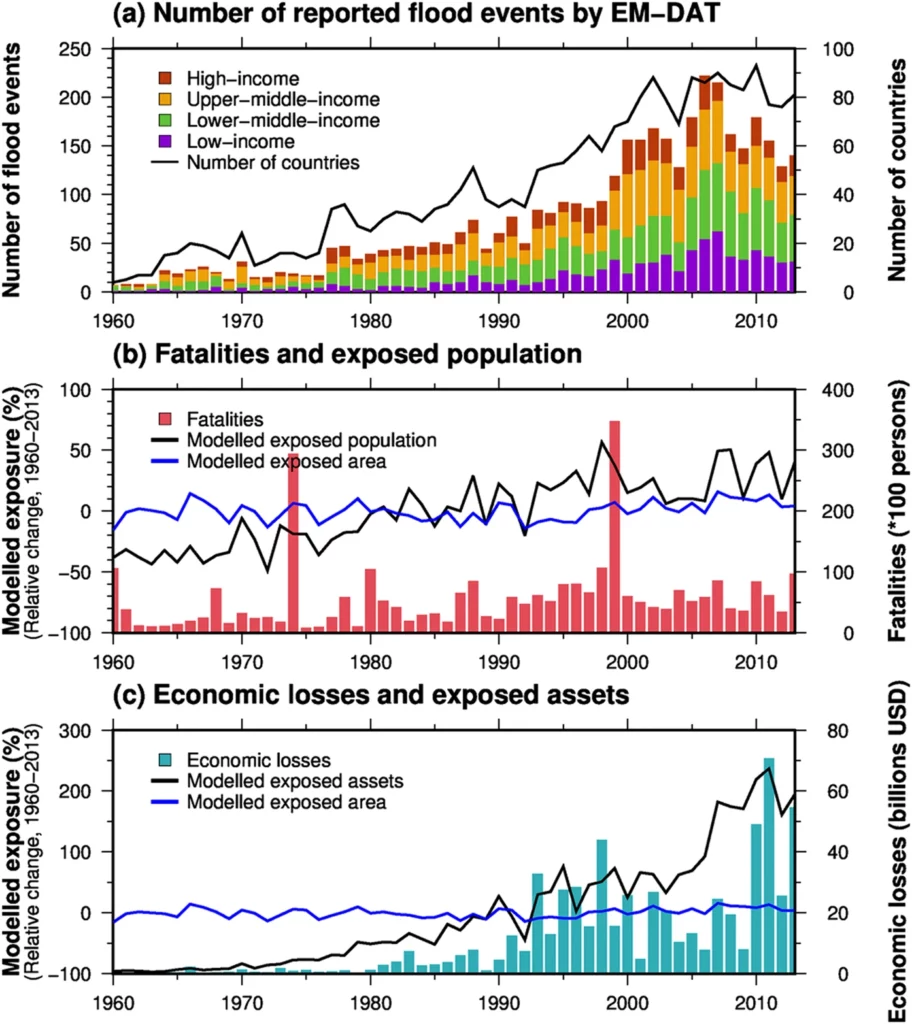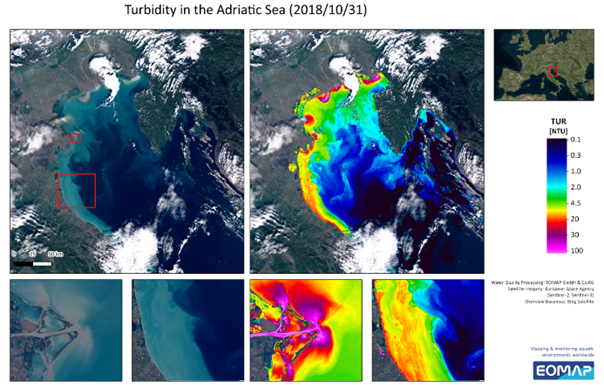
Who Occupies Space? An Analysis of the Number of Satellites Launched Up to May 2022
Editor’s note: This article was written as part of EO Hub – a journalistic collaboration between UP42 and Geoawesomeness. Created for policymakers, decision-makers, geospatial experts and enthusiasts alike, EO Hub is a key resource for anyone trying to understand how Earth observation is transforming our world. Read more about EO Hub here.
Satellites have transformed the world in countless ways, from communication and navigation to Earth observation and monitoring climates. Satellite technology has opened up new horizons for all.
Over the course of recent decades, the industry has experienced tremendous progress and growth. However, the real boom, called “New Space”, started a few years ago with certain technology advancements, disruption caused by many different factors including: new micro satellites, decreasing cost of launching satellites to the orbit and an inflow of capital and talent to the industry.
The number of satellites above us has grown exponentially, from several dozen to several thousand, and the number of countries with space aspirations is also ramping up.
We depend in our article on analyzing data from UCS Satellite Database provided by the Union of Concerned Scientists and updated till May 1,2022.
Satellite Industry Democratization
Since the first launch of an Earth-orbiting satellite by the USSR on October 4, 1957, the space industry has been dominated mainly by the USSR and US. Until 1966, only six countries had launched satellites, while today, more than 100 countries have at least one satellite in space. This shows that the technology barrier to launching an object into space has lowered. It also shows that, on the one hand, being a part of the space industry is a strategic activity for some governments, and on the other hand, market trends are pointing toward the democratization of the satellite industry.
One of the trending sectors in the satellite industry is earth observation (EO), where EO satellites utilize remote sensing capabilities to gather information about planet Earth’s physical, chemical and biological systems. It’s used to monitor and assess the changes in the environment and human landscape, and provide humans with situational awareness on the global scale. In the last half-century, EO satellite development has played an important role in enhancing our understanding of earth-system cycles, focusing on scientific research and military purposes. We have counted about 170 earth observation satellites that were launched before 2013. Since then, in the decade to May 2022, at least 966 remote sensing satellites have been launched.
Several events have driven the growth of the New Space sector. In 2013, Planet launched its first commercial microsatellites – Dove 1, 2, 3 and 4, followed by over 200 more satellites launched until recently. In 2015, Barack Obama signed the Commercial Space Launch Competitiveness Act, and the sector, which was considered strategic, opened up to private initiatives. This changed the purchasing model of space agencies, who moved from merely paying for the construction of a solution they had designed themselves, to buying the whole solution, thus making room for innovation in the private sector.
Another factor has been the initiatives of billionaires such as Elon Musk, Richard Branson, and Jeff Bezos, followed by venture capital interest. The more they invest in the development of space technologies, the more they decrease the cost of associated projects, such as building space launchers and rockets. At the same time, they have enabled dozens of startups across the value chain that want to launch their own satellites or build solutions based on satellite data and space technologies. A good example is UP42, which is a digital marketplace for satellite data and processing infrastructure that offers for its users easy access to high quality geospatial data from multiple satellite data providers.
Although there has been a remarkable increase in the number of countries that have entered the satellite industry, the United States is still leading the industry, followed by China. Russia, which was a major competitor to the US in the 1960s, has fallen to fourth place in terms of satellite-owning countries.
Interestingly, commercial companies have launched more satellites than government and military agencies put together. Although the numbers are driven by SpaceX (2219 satellites) and Planet (215 satellites), the overall number of satellites in the commercial segment for communications and earth observation is higher than the government and military combined. And this activity has happened in just the past few years.
Top 10 Companies Launching Earth Observation Satellites into Space
Looking at private satellite companies in the earth observation sector, we have come to an interesting conclusion. The private market is dominated by the US and China. Although the US has the most satellites owned by private companies, China has more private companies in total. Planet and Spire dominate the sky owning together 338 satellites but interestingly, data suggest that China has 21 companies that have at least one earth observation satellite in orbit, with 12 companies based in the US
Crowded Sky
"Space is getting crowded" is not an exaggeration; it reflects the huge increase in the number of satellites in space. The World Economic Forum Global Risks Report 2022 identifies lack of governance and the overcrowded space, especially at low level orbit, as a threat in the coming years. This is a threat that may have a serious effect on life on earth, given that the satellite industry plays an important role not only in the global navigation and communication sectors, but also in other fields such as broadband internet, TV, radio services, and supply chain monitoring.
According to the Union of Concerned Scientists (UCS), the Covid-19 pandemic did not have a significant effect on the flourishing satellite industry. On the contrary, the number of satellites launched into space in 2020 exceeded 1000 for the first time in history, and in 2021 around 1673 satellites were launched, which was almost equal to all the satellites launched into space between 1974 and 2019 (1971 satellites).
As the presence of satellites in space continues to increase, many new threats and challenges have emerged. Space congestion is obscuring the stars; the night sky will appear very different and become dominated by the moving lights of satellites orbiting the earth if their number increases by a factor of 10 or more. Negatively altering the night sky impacts astronomers, environmentalists, amateur stargazers, and Indigenous groups. For Indigenous groups, changes in the night sky may adversely affect spiritual and cultural practices involving the stars. Losing 70% sensitivity in certain frequencies due to interference from satellite mega constellations is a major concern for astronomers. According to a statement published in 2007 by UNESCO and the International Astronautical Congress, "an unpolluted night sky that allows the enjoyment and contemplation of the firmament should be considered an inalienable right [of humankind] equivalent to all other sociocultural and environmental rights."
According to Marla Geha, a professor of astronomy at Yale University, by the end of 2021, there were more than half a million pieces of space junk orbiting the earth, moving at a speed of 17000 miles per hour. She added that although space may be large, satellites are crowded in fairly specified areas, which will increase the threat of damaging the bulk of satellites that we depend on in our daily lives due to the huge amount of space debris that could be generated from the explosion of a single satellite, and consequently may lead to a series of explosions in other satellites.
The Future
The satellite sector is one of the most important forms of human development, power, and creativity. The invaluable capabilities and advancement of EO satellites in space create a great opportunity for assessing and mitigating environmental catastrophes, and exploiting new opportunities in exploring and managing natural resources. This great progress in the space sector was accompanied by the advancement of methods and techniques for analyzing and processing satellite output, which provides great opportunities for developing and improving the speed and quality of investment of this output, by taking advantage of the various services provided by analysis companies such as UP42.
We humans must take advantage of these opportunities to enhance and develop the environment and not turn them into an existential threat to our land and our gender.
Did you like the article? Read more and subscribe to our monthly newsletter!









